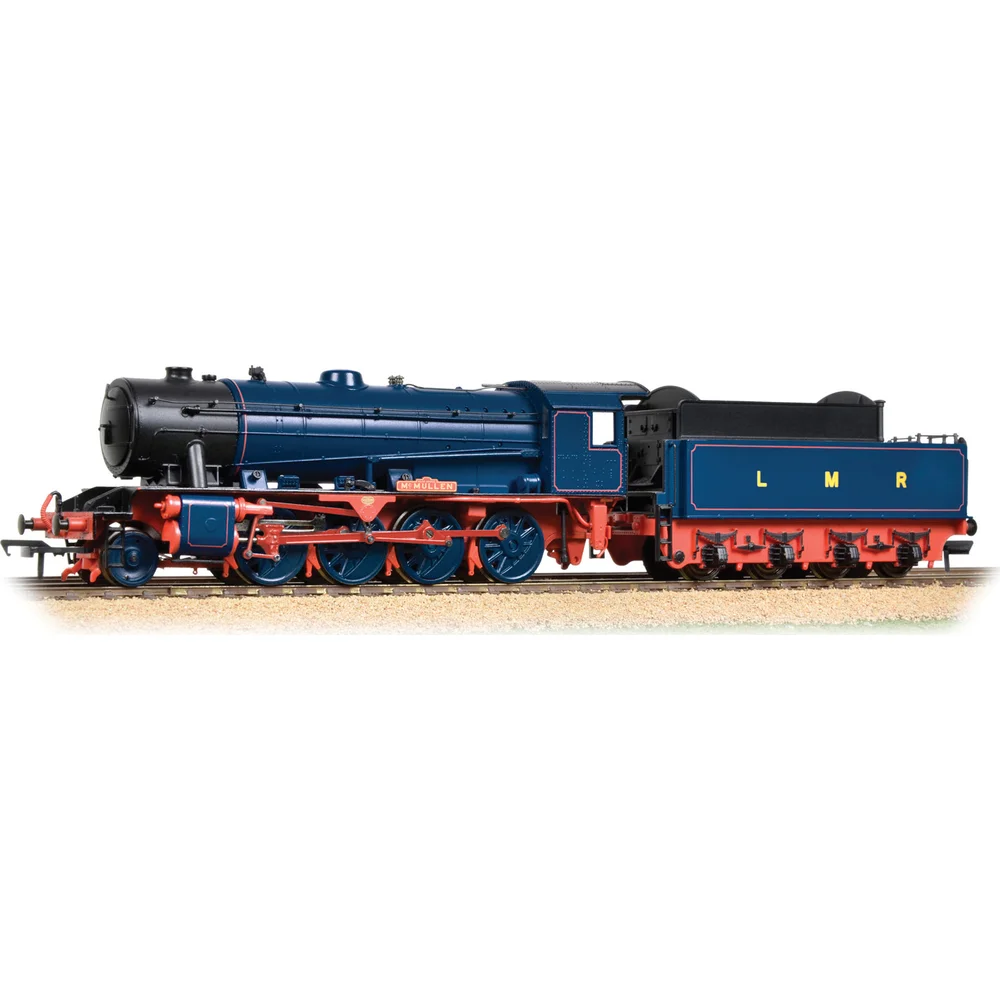Bachmann 32-250A
War Department Austerity 2-8-0 79250 "Major-General McMullen" Longmoor Military Railway Blue
Tooling
In 2012, Bachmann Branchline released a significantly upgraded version of its OO gauge War Department Austerity 2-8-0. This retooling replaced the original 1996 tooling and addressed many of the limitations of the earlier model, aligning it with contemporary expectations for detailing, performance, and digital control. The upgrade was part of Bachmann’s ongoing effort to modernise its range and improve fidelity to prototype and operational standards.
Tooling Features
- Scale: OO gauge (1:76)
- Construction: Plastic bodyshell with separately fitted fine details; metal chassis
- Detailing: Factory-fitted handrails, lamp irons, pipework, smokebox door dart, safety valves, cab interior, and etched nameplates on select models
- Couplings: NEM pockets with tension-lock couplers; sprung buffers
Mechanical & Electrical
- Motor: 3-pole motor located in the locomotive
- Drive: Loco-driven wheels with all-wheel pickup
- Minimum Radius: Compatible with second radius curves (approx. 438mm)
- Lighting: Directional lighting on some models; provision for lamps via decoder functions
- Weighting: Balanced weight distribution in loco and tender for improved traction
DCC Capability
The 2012 tooling introduced full DCC readiness with a 21-pin socket located in the tender. This allowed for straightforward decoder installation and enabled sound-fitted versions using ESU LokSound V5 decoders. Models with sound included a wide range of functions such as playable whistles, injectors, firebox door effects, and shunting mode.
Liveries Produced
Several liveries were produced using the 2012 tooling, including:
- Longmoor Military Railway Blue
- LNER Black
- BR Black (early and late crests)
- War Department Khaki
Reviews
Reviews of the retooled model were generally positive. Enthusiasts praised the improved detailing, smoother running, and ease of DCC installation. Sound-fitted versions received particular acclaim for their immersive audio experience. Some users noted minor issues with tight body fitting and occasional short circuits when reassembling, typically resolved with careful insulation.
Media & Commentary
The upgraded model has been featured in numerous YouTube reviews and layout showcases. Social media commentary highlights the model’s improved realism and performance, with many users considering it a worthwhile upgrade over the original tooling. Forum discussions often compare the new version favourably to other contemporary releases, especially in terms of finish and sound quality.
Additional Notes
- Accessory packs included additional pipework and bufferbeam details
- Removable coal load with modelled coal space beneath
- Some models included adjustable tender drawbars for closer coupling
- Sound-equipped models supported analogue operation with automatic sound playback
Class & Prototype
- Class: War Department Austerity 2-8-0
- Traction: Steam
- Built: 1943-1945
- Total Built: 935
No prototype found.
Operator & Livery
- Operator: Longmoor Military Railway
- Livery: Blue
The Longmoor Military Railway (LMR) was Britain's military railway training facility, operating from 1903-1969 in Hampshire. Built by the Royal Engineers, it trained soldiers in railway construction and operations for global deployment. The railway featured over 1,000 locomotives during its existence, including famous War Department Austerity designs in distinctive royal blue livery with red lining. Originally known as the Woolmer Instructional Military Railway, it was renamed LMR in 1935. The 8-mile system connected Bordon to Liss with a circular training loop, serving as a filming location for movies like Chitty Chitty Bang Bang and Bhowani Junction. Many locomotives survive in preservation, making LMR a popular subject for railway modellers across all scales.
The distinctive LMR blue livery was the standard paint scheme used on Longmoor Military Railway locomotives from the post-World War II period until closure in 1969. The scheme consisted of royal blue as the base colour, enhanced with red lining applied to frame components, coupling rods, and wheel tyres. Yellow lettering was prominently displayed on cab sides and tank sides, featuring "LMR" initials alongside locomotive numbers in standardised military fonts.
Contemporary accounts describe the livery as "royal blue lined red, with red rods and yellow lettering," creating a smart military appearance that distinguished LMR locomotives from civilian railway stock. Some sources also refer to it as "Oxford Blue" when describing rolling stock applications. The scheme maintained military standards of appearance whilst providing high visibility for safety purposes during training operations.
Variations existed within the standard scheme—some locomotives featured red frames and under foot plating with blue wheels, whilst others retained black frames with blue bodywork. Special occasions, such as locomotive naming ceremonies, included additional white wheel treatments. The livery was also applied to coaching stock and rolling stock, creating a cohesive visual identity across the entire railway.
For modellers, Precision Paints P16 (Royal Blue) provides accurate colour matching, with careful application of red lining and yellow lettering essential for authentic representation. The distinctive scheme remains popular among military railway enthusiasts and is featured on various ready-to-run and kit models across multiple scales.
